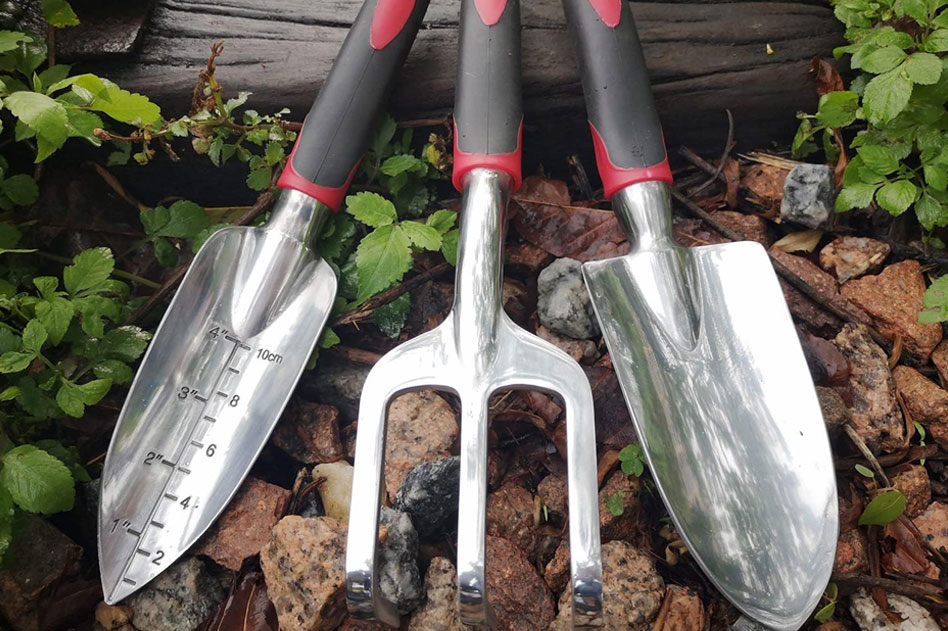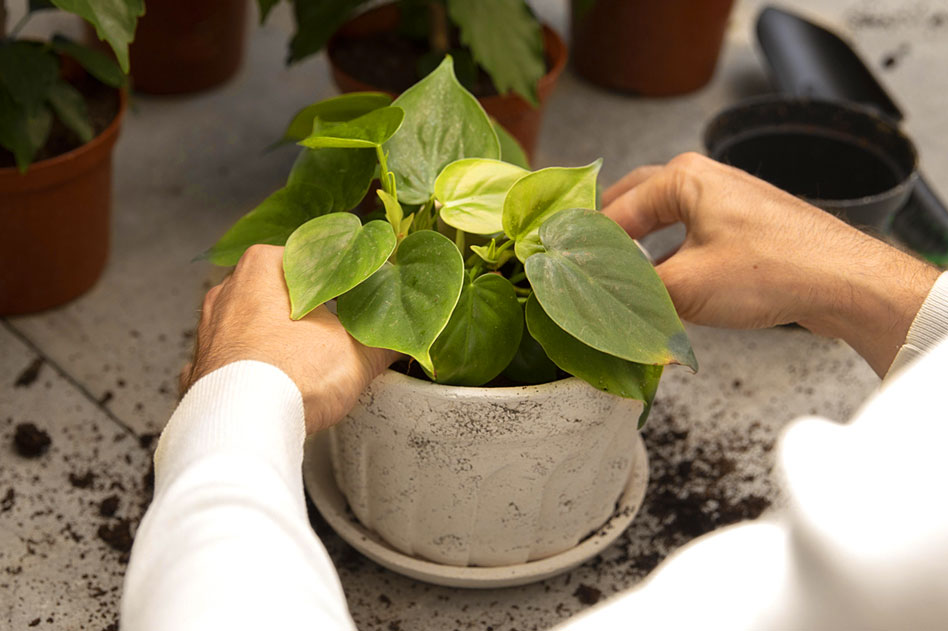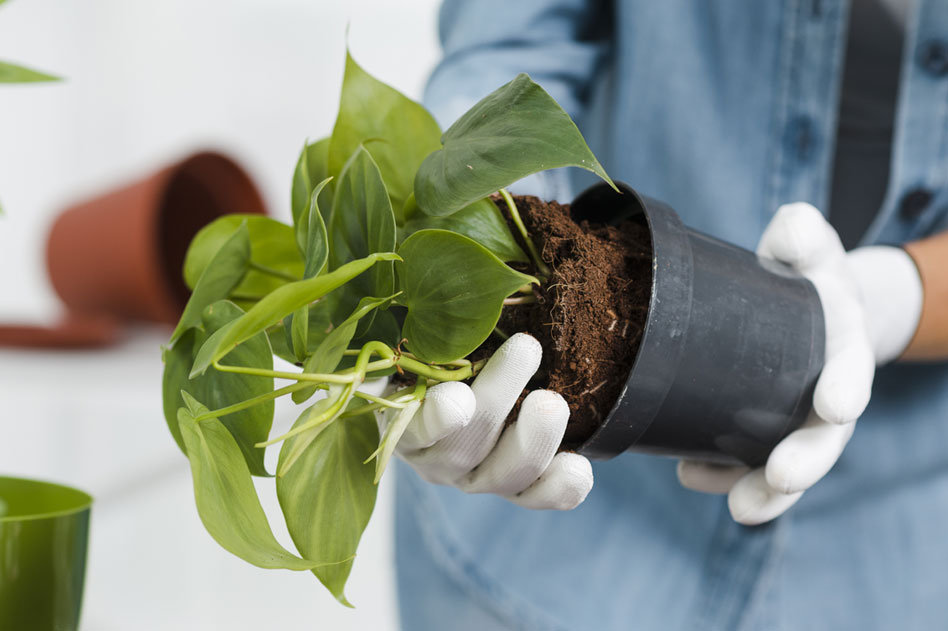Plants bought from stores are often in small, over-fertilized nursery pots filled with temporary “booster soil” or “greenhouse soil.” Repotting into a fresh, more balanced environment sets your plant up for long-term success.

What You’ll Need:
- A new pot (1 to 2 inches larger in diameter than the current one, with drainage holes)
- High-quality potting mix (choose one suited to your plant type, general houseplant, cactus, orchid, etc.)
- A trowel or spoon
- A catch tray or newspaper to keep things clean
Optional: gloves, pruning shears, and root stimulant

Step-by-Step Instructions:
1. Water the plant a few hours before repotting
Moist soil holds together better and reduces transplant shock.
2. Choose the right new pot
- Use a pot with drainage holes.
- Don’t go too big. Choose 1 to 2 inches wider. Too much soil can retain excess water and lead to rot.
3. Gently remove the plant
- Squeeze or tap the sides of the nursery pot to loosen.
- Turn the plant sideways, support the base, and slide it out.
- If stuck, use a knife along the inner edge of the pot.
4. Inspect the roots
- Look for tightly circling (rootbound) or rotting roots.
- Trim away dead, mushy, or blackened roots with clean shears.
- Gently loosen circling roots so they can spread in the new soil.
5. Add soil to the new pot
- Place fresh potting mix in the bottom so the plant sits at the same height as before—no deeper.
6. Place the plant and fill in around it
- Center the plant and add soil around the edges.
- Press gently to secure but don’t pack too tightly (roots need air).
7. Water thoroughly
- Let water run through and drain out.
- This settles the soil and hydrates the roots.
8. Wait before fertilizing
- Hold off on fertilizing for 2–4 weeks. Let your plant adjust to its new environment.
🌱 Bonus Tips:
- Repot during spring or early summer when plants are actively growing.
- If your plant is stressed (wilting, browning), wait until it stabilizes before repotting.
- For large plants, you can refresh the top few inches of soil instead of repotting entirely.
Repotting your plant is one of the most important steps you can take to ensure its long-term health and happiness. While greenhouse-grown plants are often boosted with temporary nutrients, giving them a fresh start in the right soil allows them to truly thrive in your home. With just a little effort, you can break the cycle of plant disappointment and set your new green friend up for a vibrant, lasting life. Think of repotting as a plant’s version of moving into a forever home—supportive, stable, and ready for growth.



